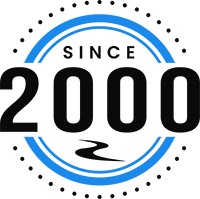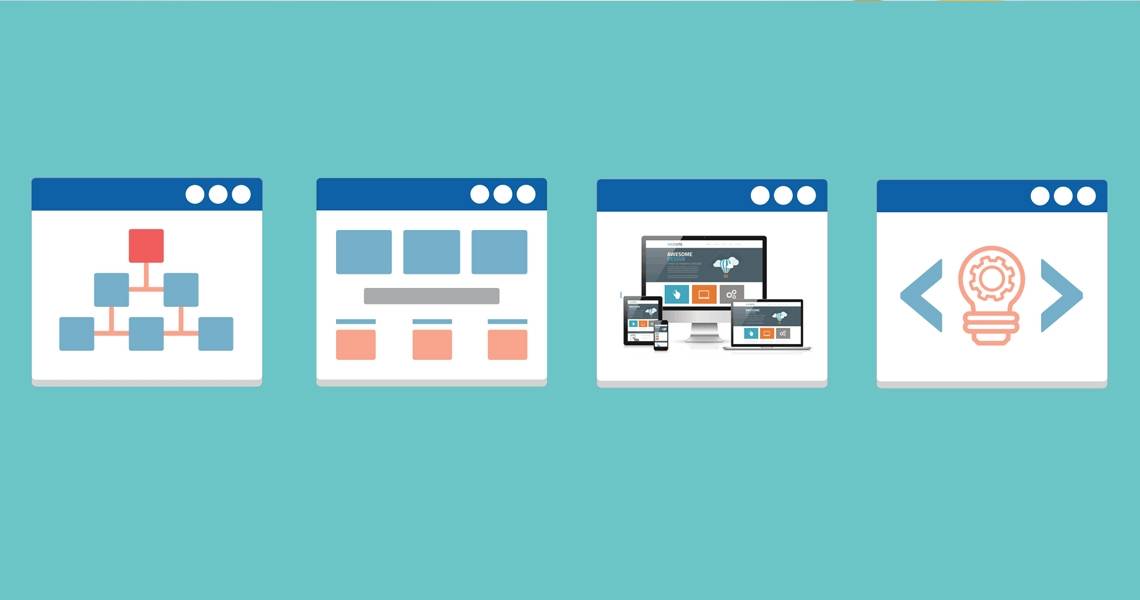How to Create an Outstanding Informational Website
Back in the day, when websites were a new way to promote your business, just having a website was enough for you to gain an advantage over your competitors. In today’s day and age when everyone has one, businesses need to be creative and innovative in their approach to put them above their competitors. With all of the ongoing advances in technology, a simple informational site might not offer up the best advantage. Enhancing your designs, content and functionality are crucial in differentiating yourself.
Design
The important area to consider is design. Have you ever gone to such a poorly designed site that you questioned its legitimacy? Have you struggled to find contact information? Were you impressed by the photography and imagery? All of these elements are incredibly important to your user’s experience and will determine how they view your brand and if they will become repeat customers.
Mobile Responsive Design
Prior to the introduction of responsive technology, best practice was to have a separate mobile friendly micro-site from your desktop site. This typically required separate maintenance for two separate sites. What a pain! Mobile responsive technology now allows you to have one website that dynamically changes and adapts to the device the site is being viewed on. This means that the website will optimize it's display and design so your user will always have the best experience possible.
Calls to Action
Calls to action are one of the most important parts to increase conversion. Having clear calls to action on your site will help encourage visitors to carry out the desired behavior. Calls to action can range anywhere from “Donate” to “Join Our Mailing List” to “Request a Quote” or “More Info.” These should be clickable in the form of a button or “tap to call,” making it easier for visitors to perform said action. You should also consider positioning and placement. Making your calls to action hard to find will not help generate those conversions, so make sure they are large and visible in the headers, footers and/or given their own area that is easy to find. Other ways to make your call to action easy to find can include the use of a side bar or a sticky widget that floats along the side of the screen as a user scrolls.
Imagery
Imagery is critical to design when it comes to making a site that is appealing to the user. Quality resolution matters! Be sure to use high resolution photos on your site that are clear and aesthetically pleasing. Having blurry images can ruin even the best website. While smartphone cameras are evolving rapidly, they cannot offer the best resolutions for website photography. In particular, they will not satisfy the needs of large slideshows or full page imagery, which is currently a big trend for today's websites. Bringing in a photographer and having them snap some great photos of your business and employees is a great way to get the best quality photos. Another option is to purchase stock photography. If you do not have the resources to have professional photos done right away, stock photography can be a good option. The images come in a variety of sizes and, while price varies, can be very affordable. There are even some sites that offer free stock photos. Just remember that personalized shots of your actual business and employees are much better than filling your site with stock options. Customers love to see real people that they can actually interact with. If choosing to use images that are not yours, do not “borrow without permission.” For most people, the easiest way to obtain photos are to run Google image searches. However, with copyright and intellectual property protection laws in place, you can find yourself getting slapped with fines if you put someone else’s photos on your site without their permission.
Menus
Have you ever gone to a website and had to drill down 5 layers to get where you wanted to go? Have you then accidentally hovered off the menu and had to start over again? Menus have a big impact on user experience. Menus should be easy to navigate, and users should never have to go more than two clicks deep to get to the page they want. If you have more than two levels consider a “mega menu.” Amazon does a great job utilizing this method to help their users navigate their deep structure. Additionally, with mobile traffic having surpassed desktops and hovering not being possible on mobile devices, websites that have hover menus and are not mobile friendly will limit the user on what they will be able to see.
Content
In the age of Google, content is critical not only to your visitors, but also to the search engines. Google will not offer your site to a potential visitor if they don’t believe it will benefit them. Google offers a set of quality guidelines that will help ensure your content makes your site appealing to both your visitor and the search engine. Here are some of their tips:
- User-friendly Pages – Google wants to see you are making an effort for your visitors and not just their algorithms.
- Don't Deceive Your Users – have you ever clicked on a search result and ended up on a page that had nothing to do with what you were looking for? Using sneaky redirects and pages with irrelevant keywords are sure fire ways to irritate your visitors (and Google).
- Avoid Tricks to Improve Search Engine Rankings – Google is incredibly smart and will know if you are gaming the system. Using hidden text or links to boost your rankings will hurt more than help.
- Unique Content – if you copy and paste content from another website or use automatically generated content Google will know, and your rankings will suffer as a result. Be sure to write your own content or have it professionally written.
In addition to having quality content, having the most important information available and up to date is crucial. Make your address and contact info easily accessible. Placing your phone number and address in the header and/or footer is always a great idea. Have multiple locations? Make sure you have a page on your site dedicated to each location. Periodic updates to your content will also keep both Google and your users happy. This can be done through adding press releases, news articles, testimonials and/or weekly featured products and services. These consistent changes let your users, and Google, know that the content on your site is up-to-date and relevant. If you are a CPA and are displaying tax documents and notices for 2012 that is going to be a problem.
Special Functionality
The best way to leap frog your competitors is to offer added value for customers that they don’t have. Consider a few of these:
- Online payments – most people nowadays prefer to pay their bills online, so offering that ability may get you their business over your competitor
- Custom Location Map – in particular, for a business with multiple locations, allowing customers to easily find your nearest location is important
- Photo Galleries – for businesses that rely on visuals to sell their products or services, photo galleries are a great way for customers to easily navigate your work
- Secure File Share Portal – as the trend continues down the path of virtualization, allowing your customers to easily and safely send documents will benefit both your business and the user
- Downloadable Content – data collection is important to building your customer database, so offering valuable downloadable content (i.e. white paper) in exchange for an email address will add value for both the user and your business
- Event Calendars – displaying deadlines, special events, fundraisers or organization meetings can easily offer users value and promote engagement
- Reservation System – according to research, if users don’t have to pick up a phone they won’t. Allowing someone to reserve appointment times on your website may give you a big advantage over your competitor who requires a phone call
The possibilities are endless in terms of the special functionality a business can add to their website. Be sure to give your customers an easy way to see the added value of using your company over your competitor.
Content Management System (CMS)
To tie all of these pieces together, a good content management system is needed to maintain the special functionality and update the website content. Not everyone understands HTML, CSS, Javascript and beyond. Having a content management system that does not require any coding knowledge is key. Does your CMS allow you to easily create/update content, embed videos, create/update photo galleries, maintain a blog, maintain meta data? Can you do it all in the same place without coding knowledge? If not, you should consider a new platform that gives you the freedom and ease you need to maintain your website.
Looking for more help?
If you think it might be time to upgrade your website, contact Brave River Solutions. We would be happy to provide you with a free assessment to get your site on track. You can also reach us by sending an email to info@braveriver.com, calling 401-828-6611, or filling out the on-page contact form.


